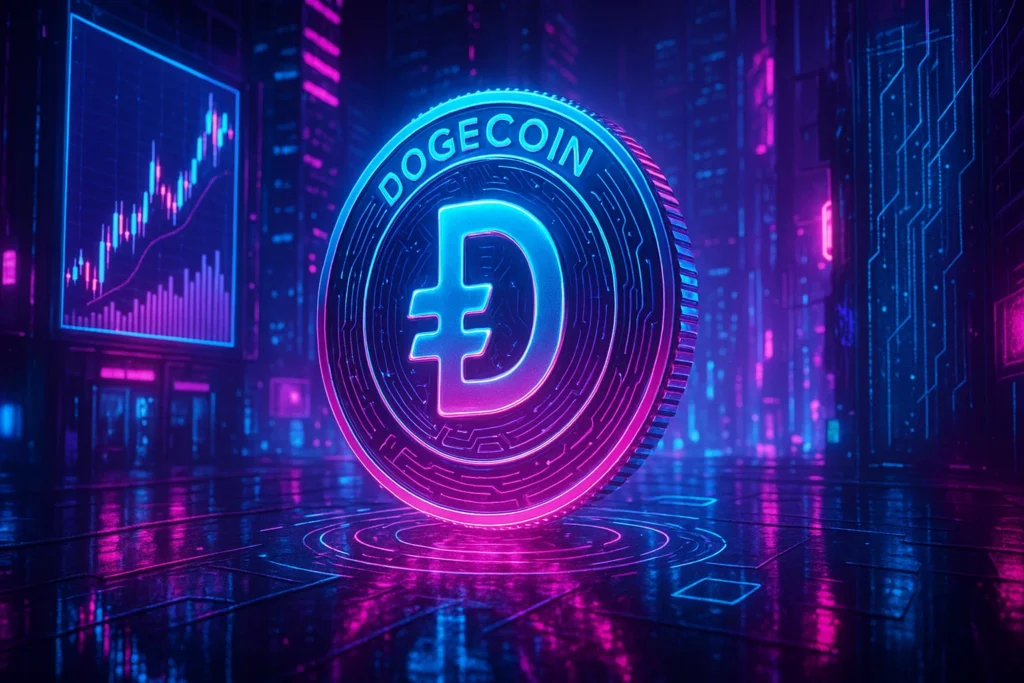Dege Coin: Unlock Its Meme Coin Secrets
Are you wondering if the next breakout cryptocurrency is hiding in plain sight, waiting for its moment to shine amidst the vibrant chaos of the crypto market? Does the sheer volume of new tokens overwhelm your strategy, leaving you questioning how to identify genuine potential versus fleeting hype? If you’re captivated by the electrifying world of digital assets and eager to understand the forces driving innovation, then diving deep into specific projects is your key. This exploration will help you navigate the landscape, especially when it comes to fascinating phenomena like the dege coin. Understanding the underlying mechanics and market sentiment around such tokens is crucial for informed decisions in this dynamic space.
Crypto Market Overview
The cryptocurrency market is a perpetual canvas of innovation and volatility, often characterized by rapid shifts in sentiment and value. Currently, the altcoin sector remains a hotbed of activity, with many new and existing tokens vying for attention. Meme coins, in particular, have cemented their place as a significant, albeit often unpredictable, segment of this market. Their meteoric rises and dramatic corrections are a testament to the power of community, social media virality, and a touch of speculative fervor.
Recent trends indicate a continued investor interest in utility-driven altcoins that offer tangible solutions or novel technological advancements. However, the enduring allure of meme coins, fueled by cultural moments and the potential for rapid gains, cannot be ignored. Airdrops, while sometimes criticized for being mere marketing tactics, continue to be a popular method for token distribution and community building, often serving as an entry point for new users into various crypto ecosystems. Navigating these diverse avenues requires a keen eye for detail and an understanding of the underlying market forces. The performance of Bitcoin and Ethereum often sets the broader market tone, but the altcoin and meme coin segments can exhibit independent, and sometimes entirely detached, price movements influenced by their own unique narratives and community engagement.
The Core Concept: How Meme Coins Actually Work
What Are Altcoins / Meme Coins / Airdrops?
Let’s demystify the terms you’ll encounter in the crypto sphere.
- Altcoins: This is a broad category encompassing any cryptocurrency other than Bitcoin. They emerged as alternatives to Bitcoin, often aiming to improve upon its perceived limitations or explore different use cases. Altcoins span a vast spectrum, from established projects with significant utility (like Ethereum, which powers smart contracts and decentralized applications) to speculative ventures with highly volatile price action.
- Meme Coins: A subset of altcoins, meme coins are cryptocurrencies that are often created as a joke or inspired by internet memes, pop culture, or online trends. Their value is typically driven by community hype, social media engagement, and speculative interest rather than underlying technological innovation or a clear business model. Dogecoin and Shiba Inu are prime examples that have demonstrated the potent influence of internet culture on cryptocurrency valuations. They represent a fascinating intersection of technology, culture, and finance.
- Airdrops: In the crypto world, an airdrop is a marketing strategy where a new cryptocurrency project distributes a certain amount of its tokens to the community, typically for free. This is often done to raise awareness, boost adoption, reward existing token holders, or incentivize specific user actions (like holding a particular amount of another crypto, signing up for a newsletter, or completing social media tasks). Think of it as a digital giveaway designed to build a user base or reward early supporters.
Key Components & Technologies
At their core, most cryptocurrencies, including meme coins and altcoins, are built upon blockchain technology. This distributed ledger system is what provides the foundation for their existence and operation.
- Blockchain: A decentralized, immutable ledger that records all transactions across a network of computers. This transparency and security are fundamental to cryptocurrencies.
- Smart Contracts: For many altcoins, especially those that facilitate decentralized applications (dApps) or decentralized finance (DeFi) protocols, smart contracts are crucial. These are self-executing contracts with the terms of the agreement directly written into code. They automatically execute when predefined conditions are met, enabling complex operations without intermediaries.
- Tokenomics: This is the economic model of a cryptocurrency. It defines aspects like total supply, distribution methods, inflation/deflation mechanisms, and often, the utility or governance rights associated with holding the token. For meme coins, tokenomics can range from remarkably simple (a massive supply, often with no intrinsic utility) to more complex designs that try to incorporate staking rewards or other incentives.
- Community & Governance: For many meme coins, the “technology” is less about complex algorithms and more about the strength and engagement of their community. Decentralized autonomous organizations (DAOs) are becoming increasingly common, where token holders can vote on proposals, influencing the project’s future direction. This community-driven aspect is a powerful, albeit often intangible, component.
The Data-Driven Perspective
Market Data & Trends
To truly understand the current appeal and potential of tokens like the dege coin, we need to look at the data.
The general trend in the Meme coin sector has been one of extreme volatility. While major cryptocurrencies like Bitcoin and Ethereum tend to move in more predictable (though still volatile) patterns, meme coins can experience parabolic surges and equally swift crashes. For instance, data from early 2024 showed a resurgence in interest for meme coins, with some tokens seeing thousands-of-percent gains within weeks on the back of social media trends or endorsements. However, it’s equally common for these gains to evaporate just as quickly.
For example, a report from CoinMarketCap might show that the total market capitalization for meme coins, while fluctuating, has consistently reached billions of dollars, demonstrating their significant market presence. Analyzing specific token performance metrics like 24-hour trading volume, market dominance, and price charts can reveal patterns. For instance, a surge in trading volume preceding a price increase can often indicate heightened buying pressure, potentially driven by a trending narrative or successful marketing campaign within the community.
Furthermore, data surrounding airdrops reveals their effectiveness in user acquisition. Projects that conduct well-targeted airdrops often see a spike in new wallet creations and active participants shortly after. The success of an airdrop can be measured not just by the number of participants but also by the sustained engagement and adoption of the project’s ecosystem post-distribution. Metrics like the percentage of airdropped tokens that are held versus immediately sold can offer insights into genuine interest versus quick profit-taking.
Tokenomics & Market Health
Tokenomics is where we crunch the numbers and assess the underlying economic structure of a cryptocurrency. For a project like the dege coin (or any cryptocurrency for that matter), analyzing its tokenomics provides crucial insights into its potential sustainability and value proposition.
- Total Supply vs. Circulating Supply: A common factor for meme coins is a very large total supply. This can make the price per token seem very low, appealing to a broader investor base. However, a high supply doesn’t automatically equate to high market cap. A project with a circulating supply of 1 trillion tokens at $0.00001 each has the same market cap as a project with 1 million tokens at $1 each. It’s the market capitalization that matters most for overall valuation.
- Distribution: How were the tokens distributed? Were they allocated to the team, early investors, marketing, or the community (through airdrops or public sales)? A significant allocation to the team or early investors can raise concerns if there are no vesting schedules, as these holders might dump their tokens, causing the price to plummet.
- Utility and Burning Mechanisms: Does the token have a genuine use case within its ecosystem? Some meme coins introduce “burning” mechanisms, where a portion of tokens are permanently removed from circulation. This deflationary pressure can theoretically increase the value of remaining tokens. However, the effectiveness depends on the scale and consistency of the burns relative to the total supply and trading volume.
- Staking and Rewards: Does holding the token offer passive income through staking? This can incentivize long-term holding and reduce selling pressure. Data on staking yields and the number of tokens staked can indicate community commitment.
For newcomers, understanding these tokenomics is paramount. A beginner might be attracted to a low token price, but an experienced investor will look at the market cap, distribution, and utility. For example, if a significant chunk of tokens is held by a few wallets (whales), there’s a higher risk of a market manipulation event through large sell-offs. Data platforms like CoinMarketCap or CoinGecko provide this essential tokenomic information.
Risks, Challenges & Competition
Risks of Altcoins and Meme Coins
While the allure of rapid gains and community participation is strong, investing in altcoins and meme coins, including tokens such as the dege coin, comes with significant risks:
- Extreme Volatility: This is the hallmark of many altcoins and especially meme coins. Prices can skyrocket based on social media trends or single endorsements, only to collapse just as quickly, leaving investors with substantial losses. The lack of fundamental value or utility in many meme coins makes them particularly susceptible to sentiment swings.
- Lack of Intrinsic Value/Utility: Many meme coins are created with little to no inherent utility. Their value is entirely dependent on continued community interest and speculation. If the hype dies down, or the community moves on to the next trend, the value can quickly approach zero.
- Security Vulnerabilities: Newer altcoins, especially those built on less tested blockchain architectures or without rigorous smart contract audits, can be susceptible to hacks and exploits. This can lead to the theft of funds or the devaluation of the token.
- Regulatory Uncertainty: The cryptocurrency space, particularly the more speculative segments like meme coins, operates within a constantly evolving regulatory landscape. Governments worldwide are still determining how to classify and regulate these digital assets. Unfavorable regulations could negatively impact token prices and project viability.
- Market Manipulation: Due to their often smaller market caps and concentrated ownership among early adopters or “whales,” meme coins can be more susceptible to pump-and-dump schemes, where a group artificially inflates the price before selling off their holdings.
- Rug Pulls: This is a particularly prevalent risk in the meme coin space. A rug pull occurs when the developers of a cryptocurrency project suddenly abandon the project, taking investors’ funds with them. This often happens when developers have a large share of the tokens and liquidity in exchanges, which they quickly drain.
How Does dege coin Stack Up Against Competitors?
To provide a meaningful comparison, let’s consider the key differentiating factors typically found in the competitive landscape of meme coins and utility-focused altcoins.
| Feature | Example 1: Pure Meme Coin | Example 2: Utility-Focused Altcoin | Hypothetical dege coin (Assessing Likely Characteristics) |
|---|---|---|---|
| Primary Driver | Community Hype, Social Media Trends | Technological Innovation, Practical Use Case | Likely driven by a community narrative, but potential for emerging utility or unique meme-culture integration. |
| Utility | Minimal to None | DeFi, NFTs, dApps, Supply Chain, etc. | Assess based on project roadmap; may start as meme-focused with plans for future utility. |
| Tokenomics Focus | Large Supply, Viral Marketing, sometimes burns | Supply caps, staking, deflationary/inflationary models to support utility | Tokenomics would crucially determine its sustainability: analyze total supply, distribution, and any utility functions. |
| Volatility | Extremely High | High, but often with more fundamental backing | Expected to be high, characteristic of meme coins, but duration and recovery potential depend on underlying project. |
| Development Team | Often Anonymous or Pseudonymous | Often Known and Transparent | Team transparency (or lack thereof) is a key indicator of risk. |
| Risk Profile | Very High | High (but generally lower than pure meme coins) | High, requiring thorough due diligence due to the inherent nature of meme coins. |
| Adoption Model | Viral Spread, Speculation | Integration into existing systems, partnerships | Community-driven adoption and potential viral marketing campaigns. |
For the dege coin, understanding its position requires evaluating its project roadmap, team transparency, community sentiment, and any unique features it offers compared to established meme coins (like Dogecoin or Shiba Inu) or emerging utility tokens. Its success will likely hinge on its ability to capture and maintain community attention while possibly developing some form of verifiable utility or unique cultural resonance.
The Future Outlook
What’s Next for Altcoins / Meme Coins / Airdrops?
The future trajectory of the cryptocurrency market, particularly for altcoins and meme coins, is shaped by several evolving trends:
- Maturation of the Altcoin Market: As the crypto space matures, there’s a growing demand for altcoins that offer real-world solutions. Projects with a clear roadmap, strong development teams, and tangible use cases in areas like DeFi, NFTs, Web3 gaming, or enterprise solutions are likely to gain more traction and potentially weather market downturns better than purely speculative assets. Data continuously shows a bifurcation: highly speculative tokens surge and fall, while utility tokens often exhibit more stable growth patterns over the long term.
- Continued Influence of Community and Culture: Despite the drive for utility, the power of community and cultural relevance in the Meme coin sector is unlikely to diminish. Future meme coins might integrate more sophisticated tokenomics, governance models, or even leverage generative AI for content creation, aiming to build more sustained communities. Projects that can effectively blend internet culture with engaging mechanics might find a lasting audience. For instance, the concept of the dege coin could evolve to incorporate interactive elements or NFTs that deepen community engagement.
- Evolution of Airdrop Strategies: Airdrops will likely continue as a tool for user acquisition and community engagement. However, we may see more sophisticated models. Instead of simple distribution, airdrops might be tied to specific user actions that contribute to the ecosystem’s growth (e.g., providing liquidity, participating in governance, or contributing content). This shifts the focus from mere token distribution to incentivizing valuable user behavior.
- Regulatory Clarity: As regulatory frameworks become clearer, projects that comply with existing and emerging laws may gain a competitive advantage. This could lead to a more stable and predictable environment for altcoins, potentially reducing the extreme volatility seen in the past and making the market more attractive to institutional investors.
- Interoperability and Scalability: The future will likely see a greater emphasis on interoperability between different blockchains and improved scalability solutions to handle higher transaction volumes. Altcoins that address these foundational technical challenges will be better positioned for long-term success.
For investors, staying informed about these trends is key. Understanding which projects are innovating in these areas, and not just chasing fleeting trends, can help in making more strategic investment decisions.
Conclusion
The world of cryptocurrencies is a dynamic and often surprising frontier, with projects like the dege coin representing the exciting, albeit risky, intersection of technology, culture, and digital finance. We’ve explored the current crypto market, demystified concepts like altcoins, meme coins, and airdrops, delved into the importance of tokenomics and blockchain technology, and highlighted the significant risks and competitive landscape.
Remember, while meme coins offer a unique cultural and speculative appeal, they demand a high degree of caution. Always conduct thorough research (DYOR – Do Your Own Research), understand the tokenomics, assess the community, and never invest more than you can afford to lose. The data suggests that while pure hype can drive short-term gains, long-term success often requires underlying utility, robust community, and transparent development.
What are your thoughts on the dege coin and the broader Meme coin market? Share your insights and predictions in the comments below! For more in-depth analysis of altcoins, DeFi, and trading strategies, be sure to subscribe to our newsletter and explore our other articles.
FAQs
Q1: What is the primary difference between an altcoin and a meme coin?
An altcoin is any cryptocurrency other than Bitcoin. Meme coins are a specific sub-category of altcoins that are often inspired by internet memes or viral trends, with their value primarily driven by community hype and speculation rather than inherent utility.
Q2: Is it safe to invest in meme coins?
Investing in meme coins carries significant risks due to extreme volatility, potential lack of utility, and susceptibility to market manipulation and rug pulls. While some investors have seen substantial gains, many have also experienced significant losses. It’s crucial to approach them with extreme caution and only invest capital you can afford to lose.
Q3: How effective are crypto airdrops for new projects?
Airdrops can be effective for raising awareness, increasing a token’s distribution, and building an initial community base. However, their long-term success depends on whether the airdropped tokens lead to sustained user engagement and adoption of the project’s ecosystem.
Q4: Where can I find reliable data on meme coin performance and tokenomics?
Reputable cryptocurrency data aggregators like CoinMarketCap and CoinGecko are excellent resources. They provide market capitalization, trading volumes, price charts, token supply details, and often links to project whitepapers or official websites.
Q5: What does “DYOR” mean in the crypto context?
DYOR stands for “Do Your Own Research.” It’s a fundamental principle in cryptocurrency investing, reminding individuals to thoroughly research any project, token, or investment opportunity before committing their funds. This includes understanding the technology, team, tokenomics, market sentiment, and risks involved.






